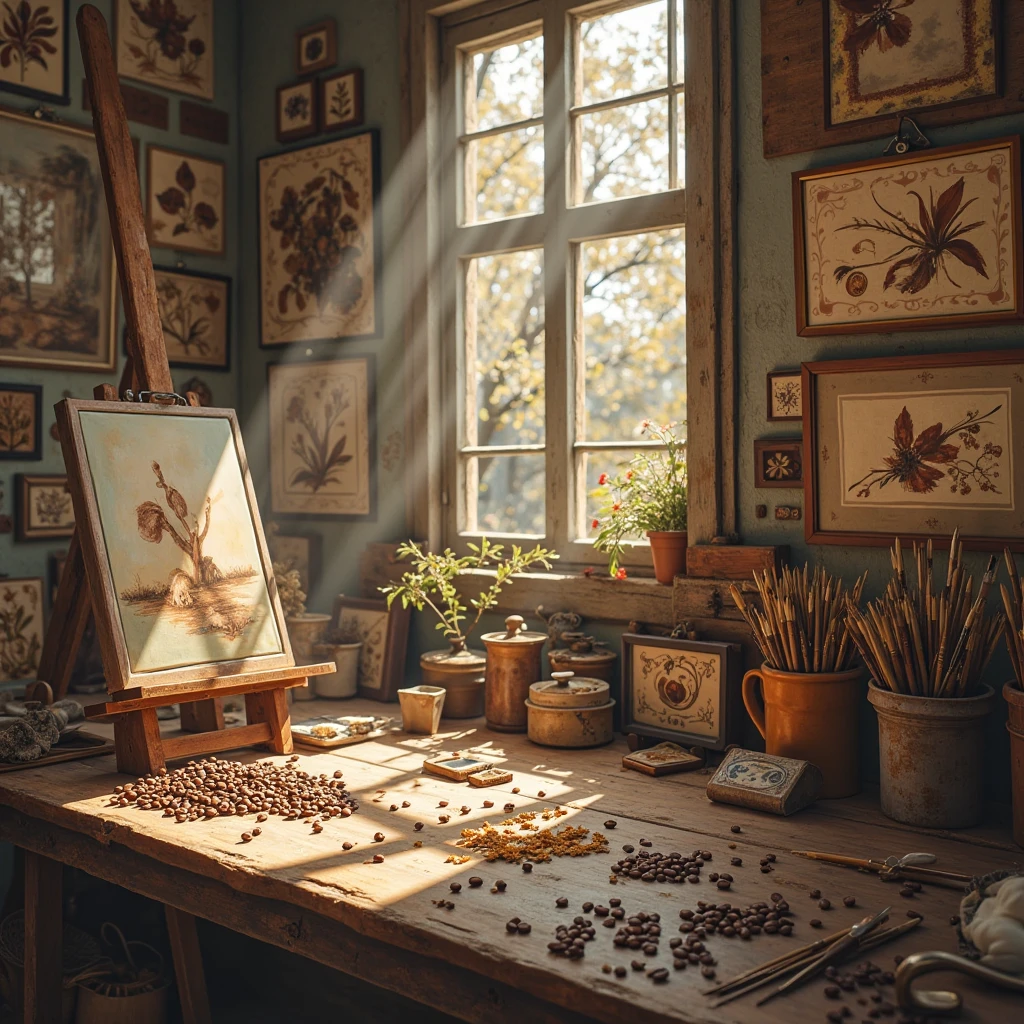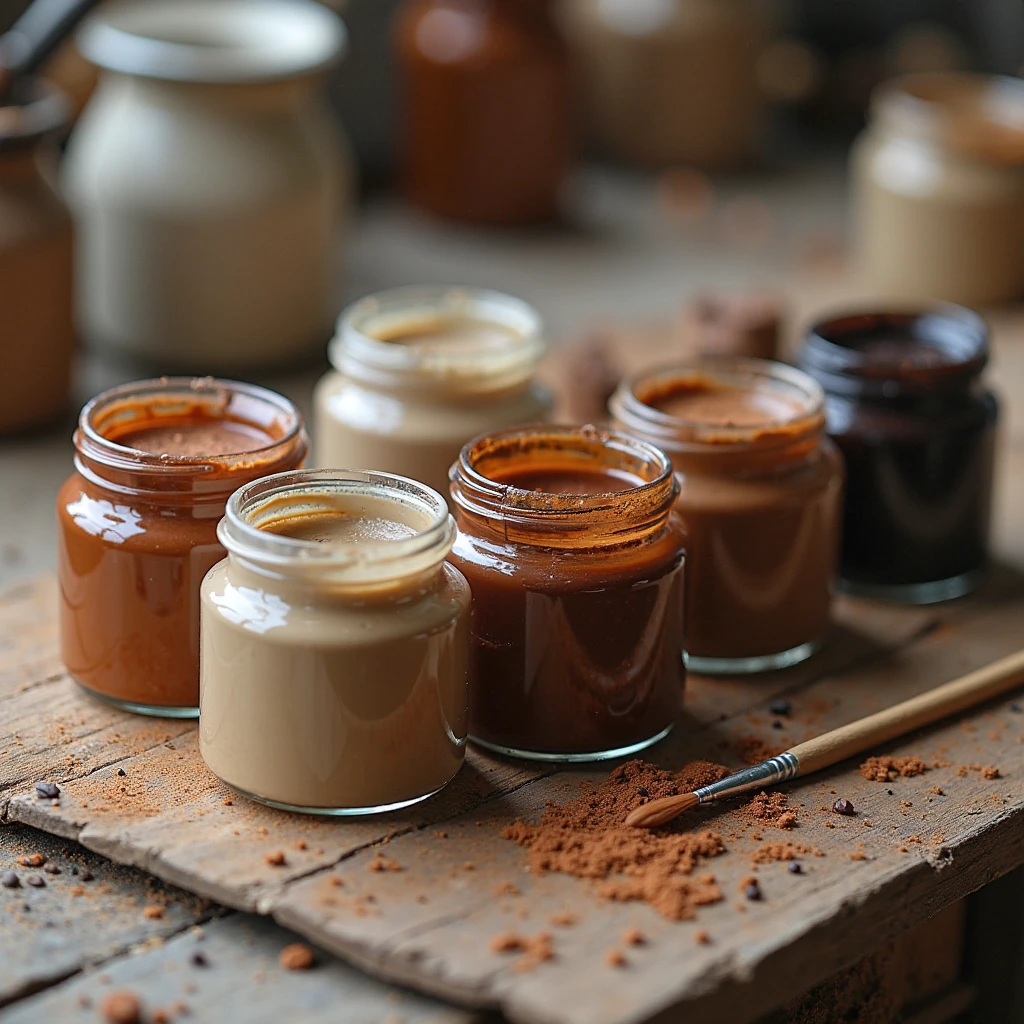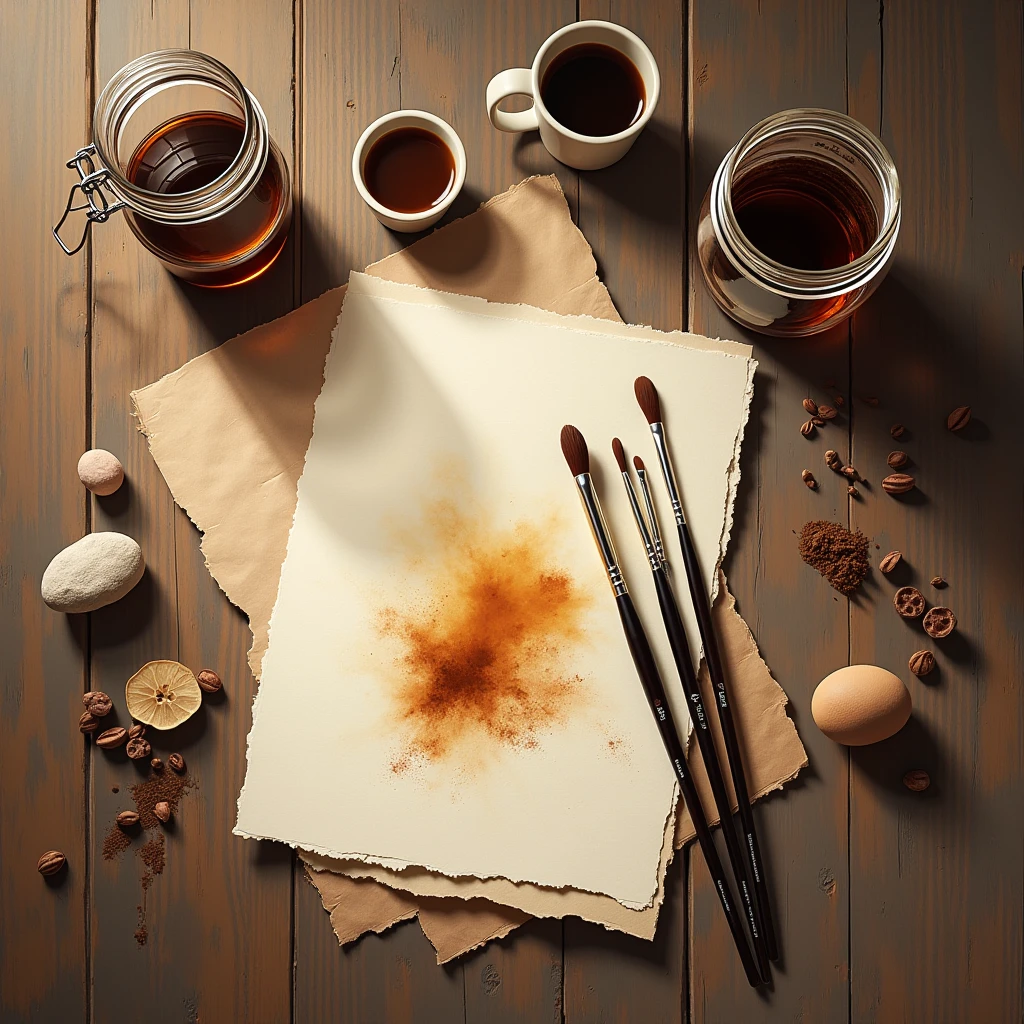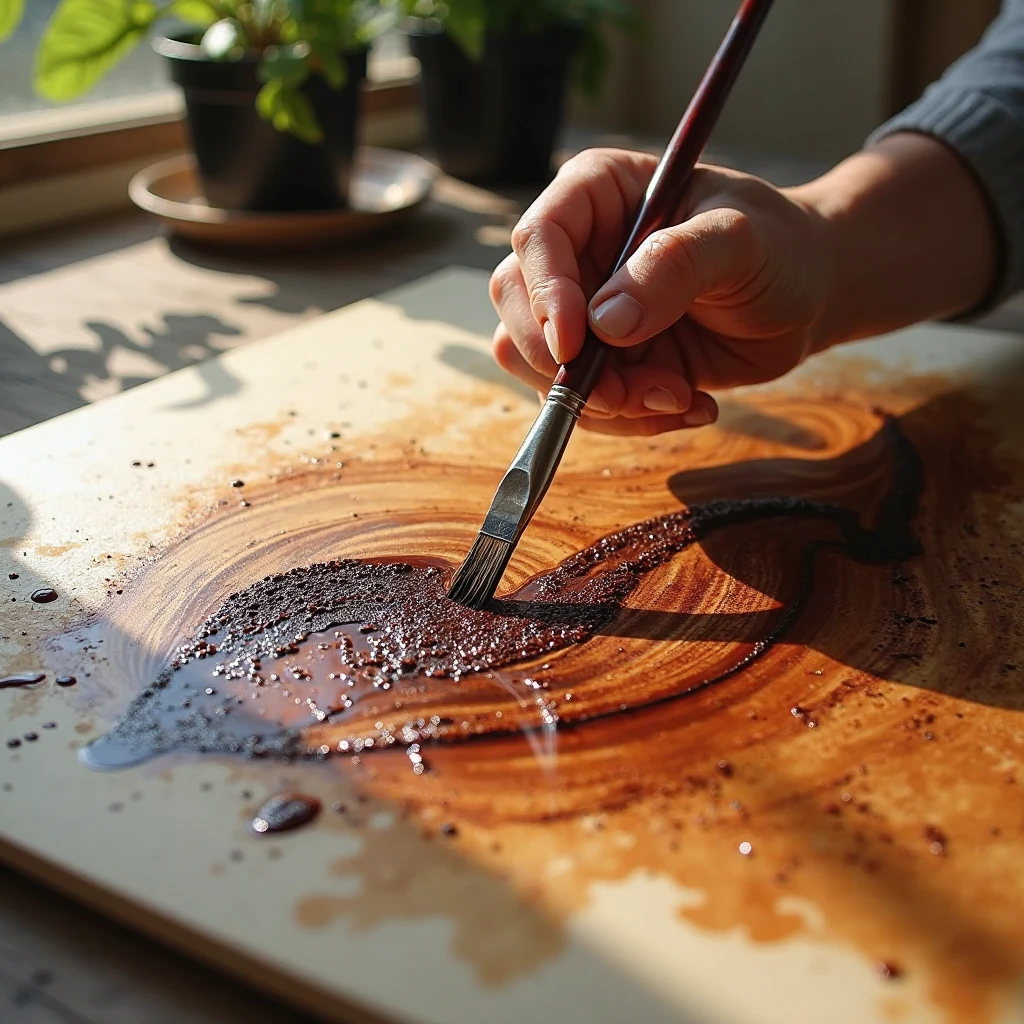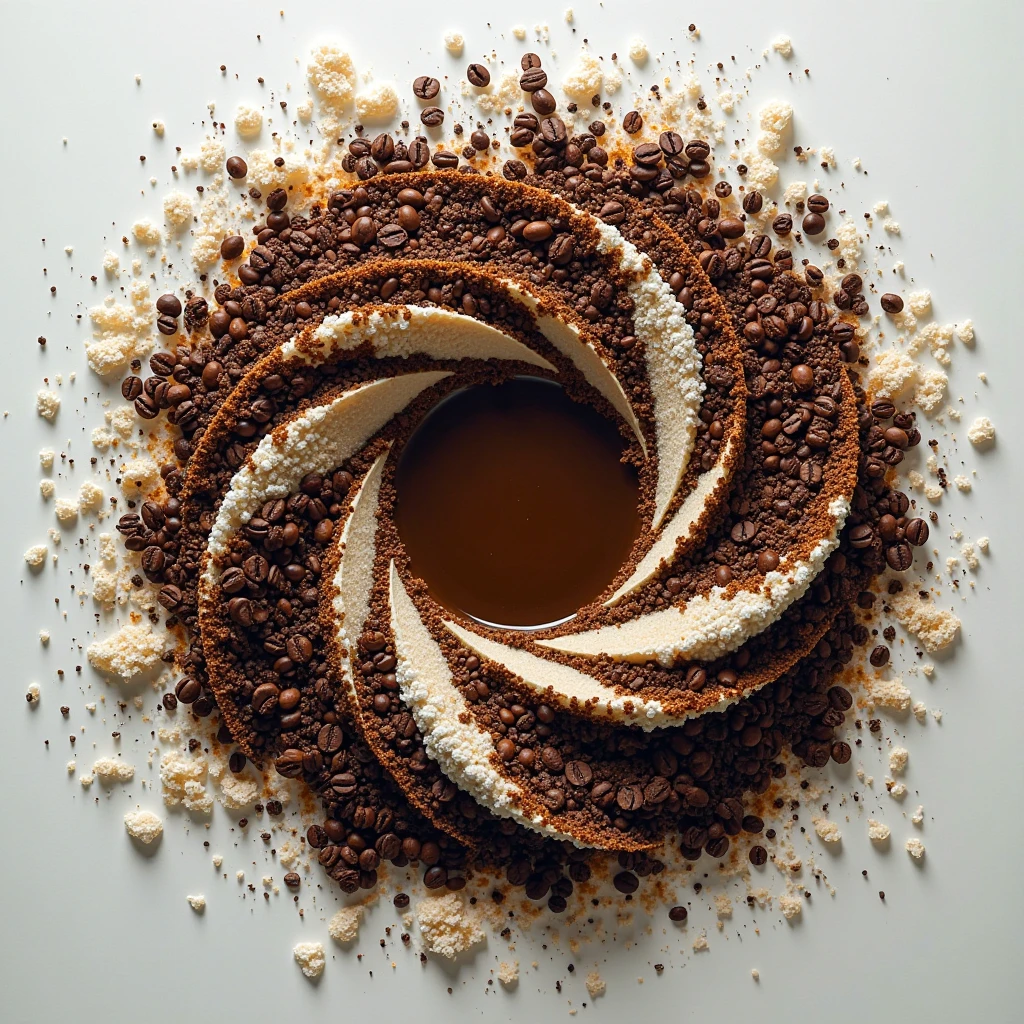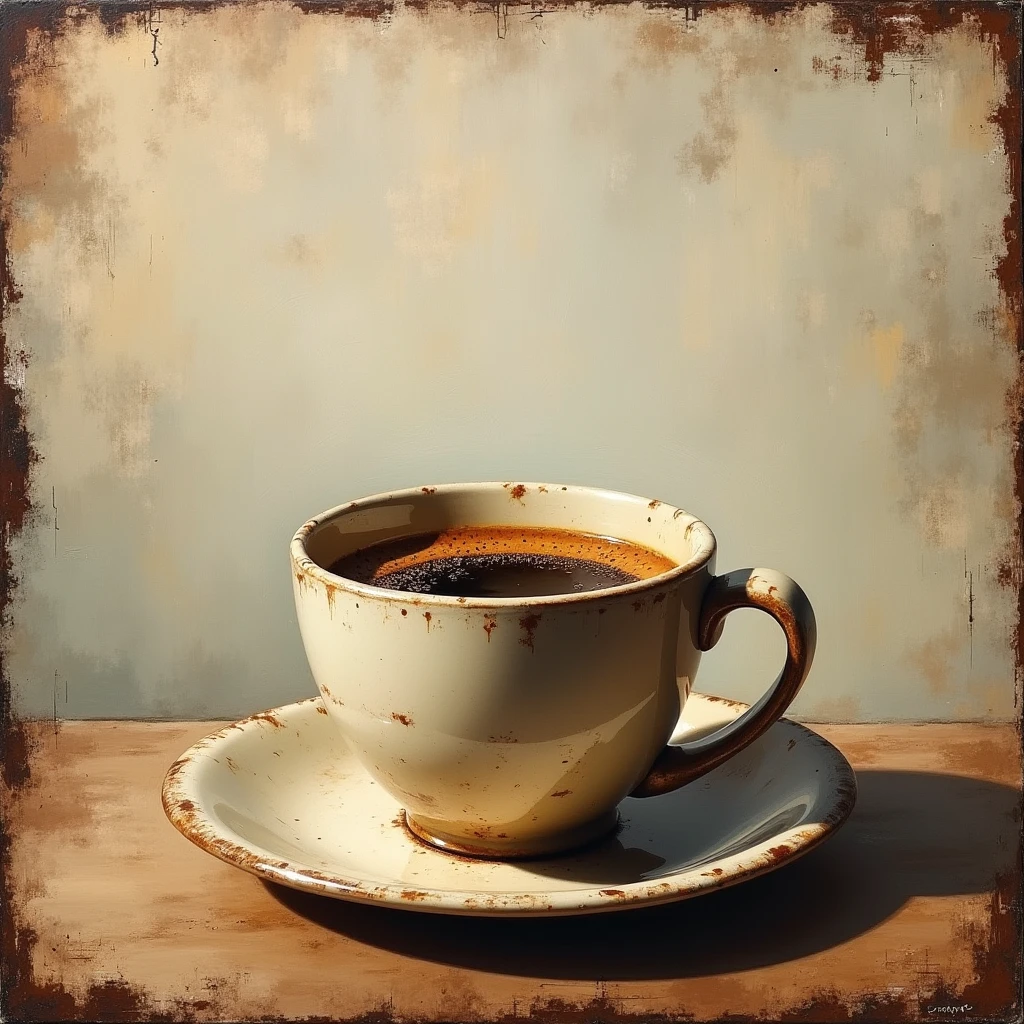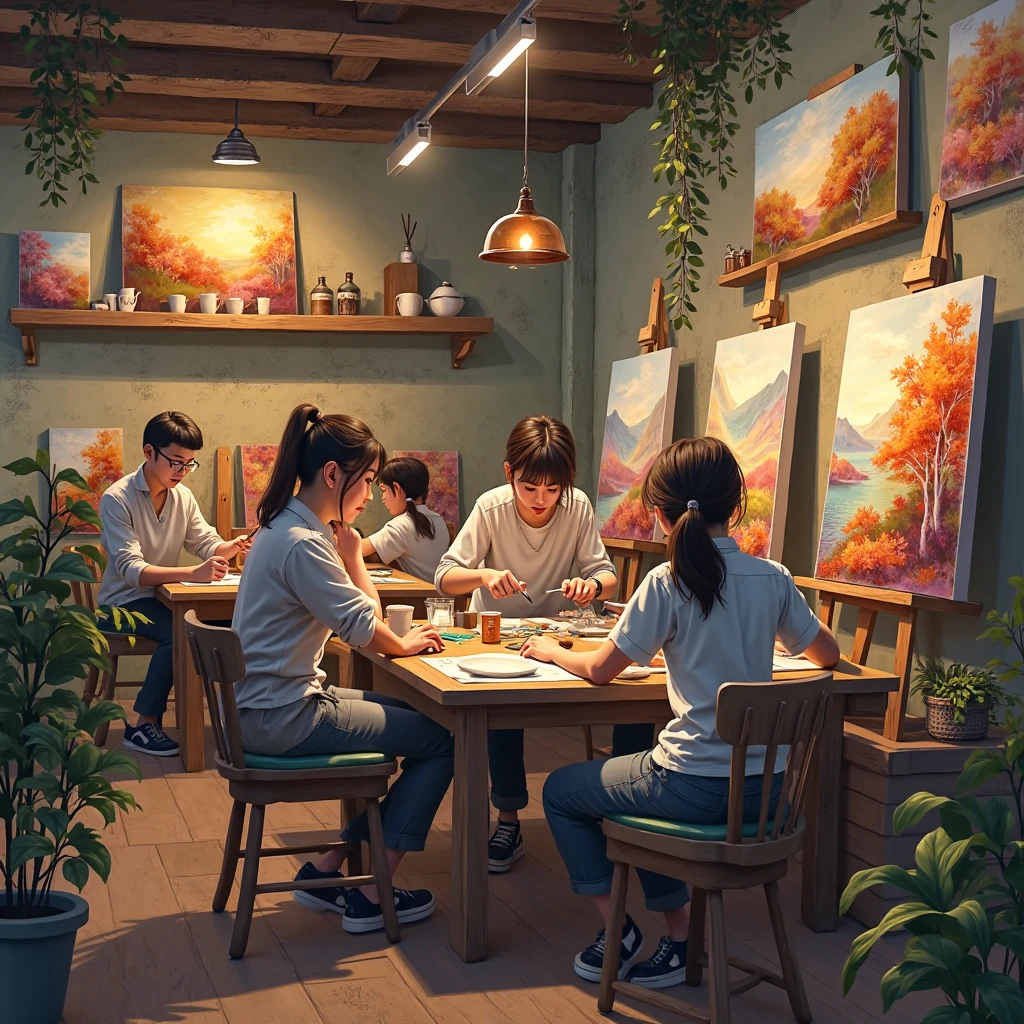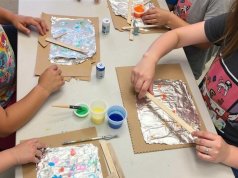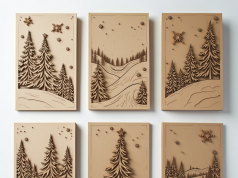Drawing coffee - is an amazing technique that transforms an ordinary drink into an artistic material. The finished works look like old engravings, acquiring a noble brown shade and a slight shabby time. In this article you will learn:
✔ How to make "coffee paint." (3 recipes).
✔ Which brushes and paper to choose for the best effect.
✔ 5 application techniques (sprinkling, glazing, scratching).
✔ How to age a pattern for a vintage look.
☕ Step 1: Prepare the "coffee colors."
🔹 3 saturation options:
- Weak solution (for background) - 1 tsp of coffee per 100 ml of water.
- Medium tone (basic details) - 2 tsp. per 50 ml.
- A thick "coffee concentrate" (contours) - brewed gruel + sugar (for stickiness).
Tip: Use instant coffee - it gives an even tone. Ground coffee leaves grits - a plus for texture!
🎨 Step 2: Select materials
| Material | Recommendations |
|---|---|
| Paper | Watercolor (cold-pressed), kraft paper or parchment |
| Brushes | Squirrel or synthetic #2-6, old toothbrush for splashing |
| Additionally | Salt (for mold effect), wax candle (reserve) |
🖌️ Step 3: Drawing Techniques
1. lamination (layering)
Apply a weak solution with a wide brush, allowing each coat to dry. The more coats, the darker the shade.
2. Sprinkling
Dip your toothbrush in thick coffee and run your finger over the bristles. This will give the effect of old stains.
3. Scratching
While the paint is wet, scratch lines (like hair or grass) with a needle or toothpick.
4. Salt and coffee
Sprinkle coarse salt over the wet drawing. After drying, the crystals will leave "mossy" divorces.
5. Wax reserve
Rub the candle on the areas that should remain light (like batik). Then paint over the coffee to reveal the pattern!
📜 Step 4: Aging the picture
- Tea processing - wipe the leaf with brewed tea for yellowness.
- Scorching edges - hold it gently over the fire (or use brown pastels).
- Artificial cracks - Apply PVA glue, fold the paper after it dries.
🌿 Story Ideas
- Portraits in the style of the 19th century (use the photo as a base).
- Old maps with "scuffs" and pen inscriptions.
- Botanical sketches - coffee is perfect for twigs and leaves.
💡 Handyman tips
✔ If the coffee is too light - Add cocoa or black acrylic paint (a drop!).
✔ Use pen and ink or white gel pen for lettering.
✔ Finish your work with spray varnish - or it'll fade.
Coffee paintings - it is not only beautiful, but also flavorful! Try creating your own "antique" work and share your results in the comments.
What else are you interested in non-traditional techniques? Write - the next workshop will be on salt watercolor! ☕🎨


